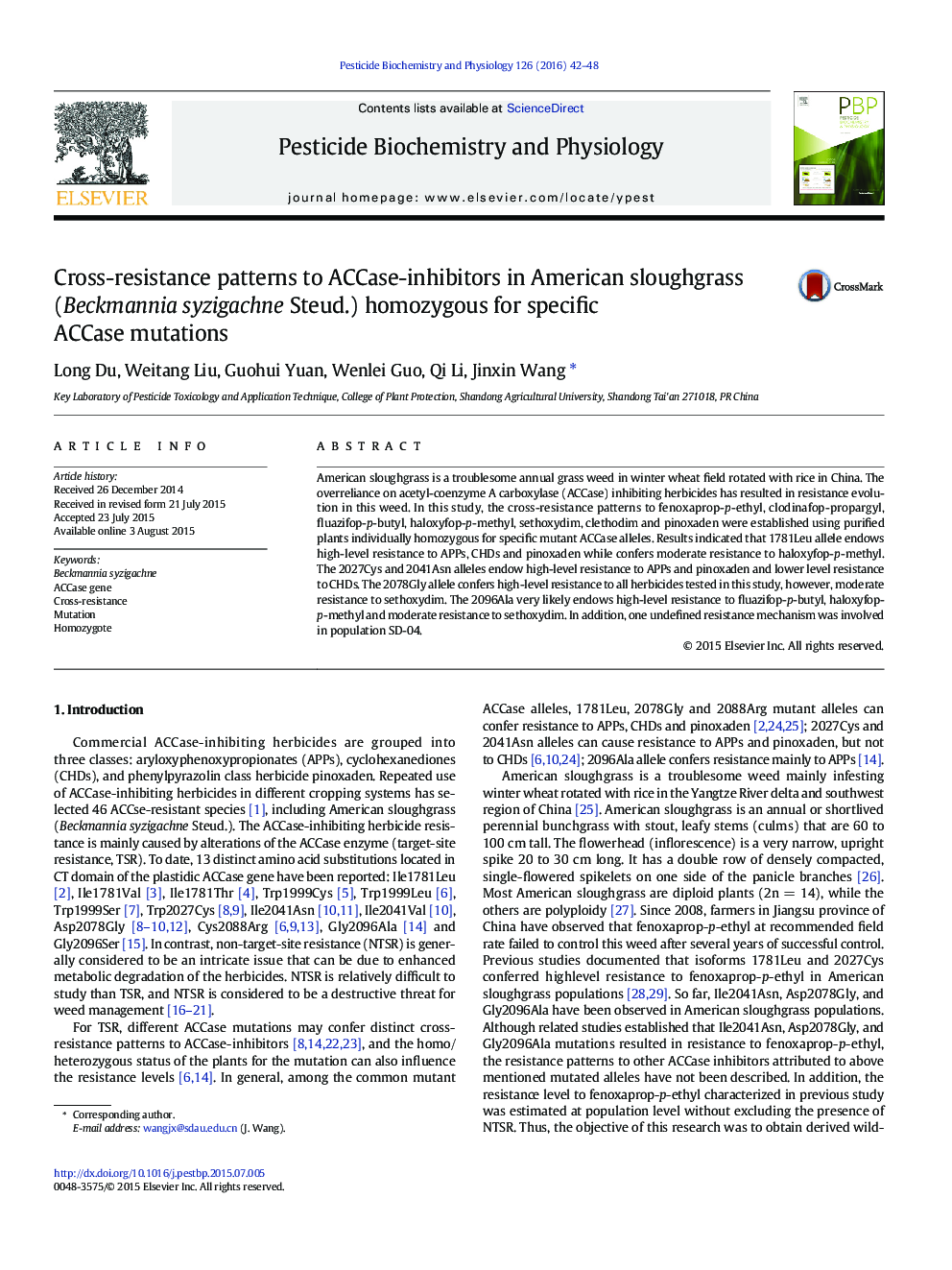| Article ID | Journal | Published Year | Pages | File Type |
|---|---|---|---|---|
| 2009076 | Pesticide Biochemistry and Physiology | 2016 | 7 Pages |
•Obtain wild-type (W/W) and homozygous mutant plants (M/M) from one heterozygous mother pant (W/M)•The cross-resistance patterns to ACCase-inhibitors were established using purified plants.•One undefined resistance mechanism was involved in population SD-04.
American sloughgrass is a troublesome annual grass weed in winter wheat field rotated with rice in China. The overreliance on acetyl-coenzyme A carboxylase (ACCase) inhibiting herbicides has resulted in resistance evolution in this weed. In this study, the cross-resistance patterns to fenoxaprop-p-ethyl, clodinafop-propargyl, fluazifop-p-butyl, haloxyfop-p-methyl, sethoxydim, clethodim and pinoxaden were established using purified plants individually homozygous for specific mutant ACCase alleles. Results indicated that 1781Leu allele endows high-level resistance to APPs, CHDs and pinoxaden while confers moderate resistance to haloxyfop-p-methyl. The 2027Cys and 2041Asn alleles endow high-level resistance to APPs and pinoxaden and lower level resistance to CHDs. The 2078Gly allele confers high-level resistance to all herbicides tested in this study, however, moderate resistance to sethoxydim. The 2096Ala very likely endows high-level resistance to fluazifop-p-butyl, haloxyfop-p-methyl and moderate resistance to sethoxydim. In addition, one undefined resistance mechanism was involved in population SD-04.
Graphical abstractFigure optionsDownload full-size imageDownload as PowerPoint slide
